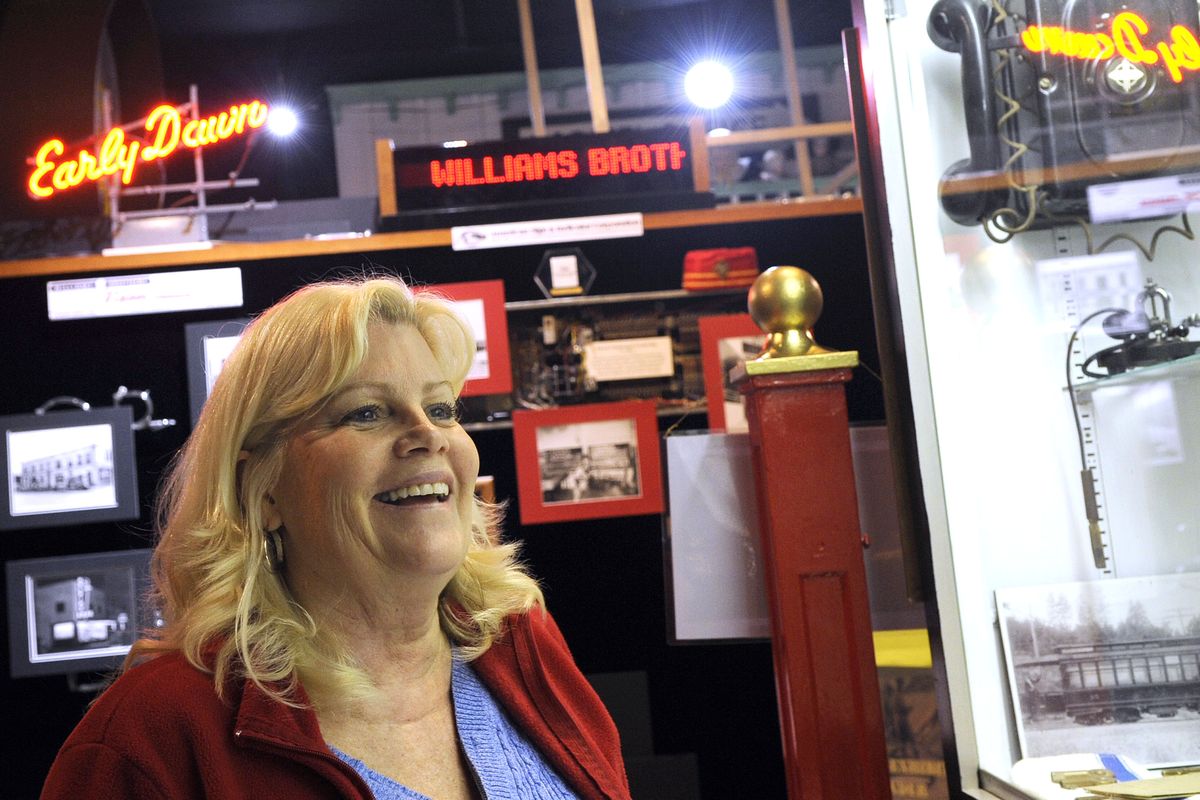Spokane Valley museum honors Luke Williams, sign company co-founder

Take a drive on any busy street across America and you’ll pass many electronic signs telling you what time it is and the temperature.
Starting March 28, the Spokane Valley Heritage Museum will celebrate the man behind those signs, Luke Williams.
Williams graduated from Central Valley High School in 1940 and later worked at his family’s business, Williams Bros. Neon Sign Products. He later co-founded American Sign & Indicator with his brother Chuck, which was the first company to produce an electronic time and temperature sign. The first one was at Spokane and Eastern, the local branch of Seattle First National Bank that was at Howard Street and Riverside Avenue downtown.
Museum director Jayne Singleton said the museum received a call from Williams’ widow, Lucy, who asked if Singleton might be interested in her collection of pictures, awards and other items from his life. He died at the age of 80 in 2004.
Singleton said when she and her staff meet to talk about an exhibit, they talk about what story they want to tell. One of those stories is one of “individuals who, through community service or some other way, made the world a better place,” she said. Williams’ story filled the bill.
The exhibit includes a class photo from CV in 1940 and pictures of him as a young boy on the farm in Veradale. There are neon signs that Singleton believes were made by Williams Bros. Neon Sign Products, pictures of the first electronic time and temperature sign and one of the original signs, which has been opened up to show the inner workings.
There is also a working American Sign & Indicator sign that proclaims, “We all owe our best,” a phrase Williams used in a speech once.
Williams was a city councilman in Spokane and garnered much support for Expo ’74.
In his obituary April 6, 2004, in The Spokesman-Review, then-president of the Association of Washington Business Don Brunell told a story about Williams arranging a lunch with executives from Ford Motor Co. to sponsor Expo. It was a hot August day and the river was running low. The lunch was scheduled for the Black Angus, which is now Anthony’s at Spokane Falls. He persuaded Washington Water Power Co. to release water from dams upstream so the executives could see the beauty of the falls. Ford became a major sponsor.
Singleton tells the story about how Williams lobbied the government after the World’s Fair to let Spokane keep the Washington Pavilion, which is now the INB Performing Arts Center.
He brought his signs to Times Square in New York and to the Los Angeles Coliseum during the 1984 Olympics. Singleton said copies of his patents will be part of the exhibit.
“Our goal is to tell the story of those who made a difference,” Singleton said.